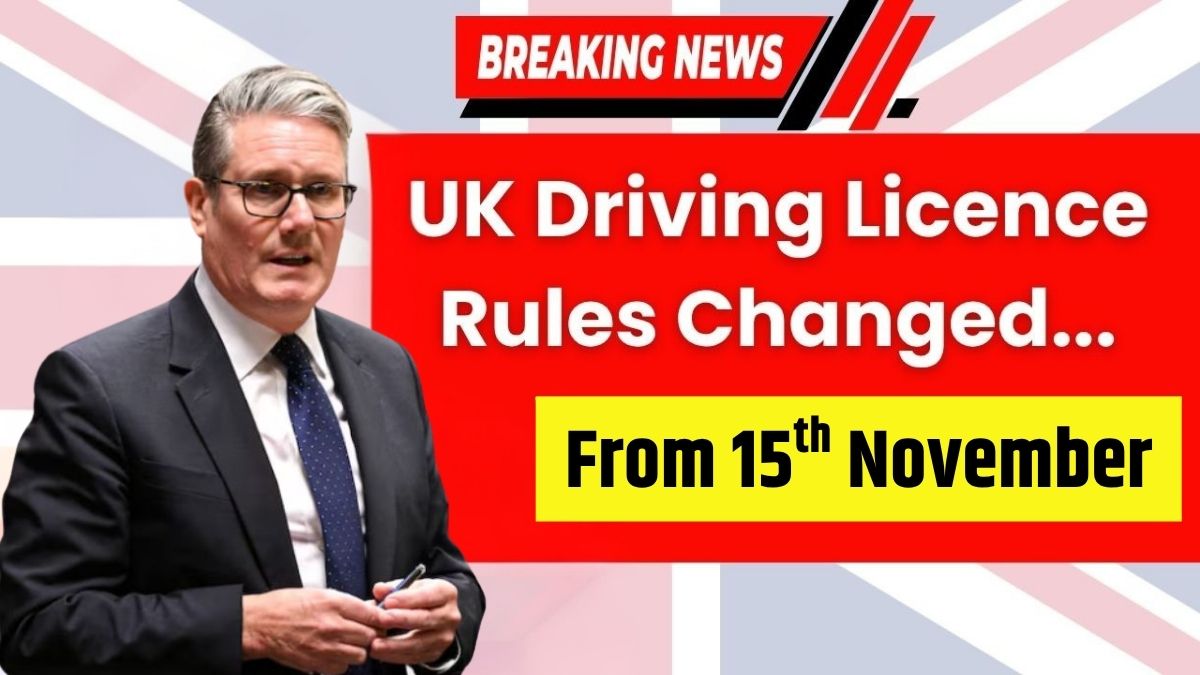In 2025 one of the most significant transformations involves who can apply for a driving licence in the UK. The eligibility standards have become more structured, especially for new and foreign drivers.
Minimum Age Stays, but Requirements Tighten

The minimum age to apply for a Category B (car) licence remains 17, but the system now demands proof of mandatory supervised driving hours before candidates can sit the practical test. This move aims to instil real-world driving experience among young applicants before they become fully licensed drivers.
Theory Tests Now Include Tech and Safety Modules
The theory test is no longer just about road signs and stopping distances. Learner drivers must now pass an expanded theory section covering:
- Advanced road safety technologies (e.g., lane-keeping systems, emergency braking)
- Updated vehicle operation rules
- Real-life driving scenarios and digital road interactions
These changes reflect the increasing use of tech in vehicles and aim to align driver understanding with modern systems.
Tighter Rules for International Licence Holders
Foreign nationals planning to drive in the UK must now follow stricter procedures:
- Proof of residency is required before a foreign licence can be exchanged.
- Rules differ based on country of origin, so drivers should check DVLA guidance early.
- Some previously accepted licences may now require additional testing or documentation.
New Categories Introduced for Micro-Mobility Vehicles
The UK is also adapting to changes in urban transport by introducing new provisional licensing requirements for:
- Electric scooters
- Low-speed micro-mobility vehicles
- Certain lightweight electric bikes
This move signals the government’s push to regulate emerging personal transport options under traditional licensing frameworks.
Major Updates in Testing and Licence Renewal Processes
The way UK drivers apply for and renew their licences in 2025 has also undergone major changes—designed to improve safety and accountability across all age groups.
More Realistic Hazard Perception Testing
One of the standout changes is the revamp of the hazard perception test. Candidates will now face:
- Digitally simulated scenarios with real-time interaction
- Greater use of dynamic situations, such as poor visibility and unpredictable hazards
This is aimed at helping drivers better prepare for real-world driving risks.
Health Comes First: Mandatory Medical Assessments Introduced
For specific groups, health checks will now be a legal part of the renewal process:
- Older drivers must pass a fitness-to-drive medical test
- Individuals with known medical conditions (e.g., epilepsy, visual impairments) are subject to mandatory evaluations
This change ensures all drivers remain medically fit, reducing the risk of health-related accidents.
Licence Renewal Cycle Now Shorter
In a move to keep driver data current, the government has reduced the renewal period for full licences:
- From 10 years to 7 years for drivers under 70
- Older drivers continue on a 3-year renewal cycle
This update ensures regular review of driver status and quicker adaptation to legal changes or safety requirements.
Say Goodbye to Paper: The Digital Licence is Here
All UK driving licences in 2025 will be:
- Issued and managed digitally
- Fully accessible via a new government mobile app
- Equipped with scannable QR codes for verification by authorities
This change eliminates paper-based licences entirely, making it easier to update records, check renewal status, and access support.
Which Licence Categories Are Affected?
The 2025 reforms cover multiple categories of licences. Below is a snapshot of how each has been impacted:
| Licence Category | Change Introduced in 2025 |
|---|---|
| Category B (Cars) | Tougher eligibility checks and updated hazard testing |
| Category A (Motorcycles) | New training hour minimums before test eligibility |
| Category AM (Mopeds) | Introduction of mandatory provisional licences |
| Category C & D (Lorries/Buses) | Mandatory medical tests and safety course certification |
| Green Fleet Vehicles | Special licensing incentives for electric/hybrid vehicle users |
Why These Changes Matter: Safer Roads, Better Prepared Drivers
The government believes the 2025 driving licence reforms will:
- Improve road safety by reducing unqualified or medically unfit drivers
- Make driver education more comprehensive, especially with updated theory and hazard perception tests
- Enhance enforcement through digital licensing and app-based verification
- Encourage adoption of green vehicles with tailored licensing categories
How to Prepare for the 2025 Driving Licence Changes
If you plan to apply for or renew your licence in 2025, here are essential preparation tips:
- Review updated materials published by DVSA for theory and hazard perception
- Enroll in DVSA-approved schools that offer mandatory supervised driving hours
- Get medical clearance if you’re over 70 or have a chronic health condition
- Download the official GOV.UK licence management app in advance to ensure compatibility
Avoiding Common Mistakes Under the New Rules
To avoid penalties or delays:
- Do not skip medical declarations—fitness checks are now mandatory
- Foreign licence holders should check DVLA requirements early, especially regarding visa/residency documents
- Make sure your mobile device supports digital licence features
- Update your contact details with DVLA to receive alerts about renewal and rule changes
(5) FAQs: Driving Licence Changes UK 2025
Q1. What is the minimum age to get a car driving licence in 2025?
The minimum age remains 17 for Category B (cars), but new drivers must complete supervised driving hours before taking the test.
Q2. Are paper licences still valid in the UK in 2025?
No, paper licences are being completely phased out. All licences are now digital and accessible through a government-issued app.
Q3. What are the medical requirements for licence renewal in 2025?
Older drivers and those with certain medical conditions must undergo mandatory fitness-to-drive health assessments when renewing.
Q4. Do foreign licence holders need to retest in the UK in 2025?
Possibly. New rules require foreign licence holders to meet residency criteria and, in some cases, take additional tests depending on their country of origin.
Q5. How can I prepare for the updated hazard perception test?
Study the latest DVSA training modules and practice using official digital simulation tools now integrated into the hazard perception testing system.





